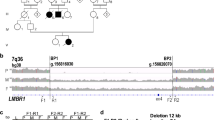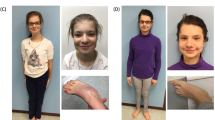Abstract
The GLI3 gene encodes a putative zinc finger transcription factor that is important in early vertebrate development. Haploinsufficiency of this gene has been associated with the Greig cephalopolysyndactyly syndrome and truncation mutations cause Pallister–Hall syndrome. In the course of studies to determine the etiology of Pallister–Hall syndrome, we required knowledge of the fine structure of GLI3 to perform detailed genetic and physical mapping and mutation screening of this gene. The coding region of GLI3 is composed of 14 exons, including a large exon of more than 2500 bp. In addition, the gene contains two intragenic dinucleotide repeats, and four single-base pair polymorphisms in the coding region. We have used these coding region polymorphisms to design an allele-specific expression study that will be useful for studying patients with Greig cephalopolysyndactyly syndrome. In addition, GLI3 should be considered a candidate gene for related developmental anomalies of humans. Such hypotheses will be more readily addressed with the availability of the fine structure of the gene and the allele-expression assay.
Similar content being viewed by others
Author information
Authors and Affiliations
Additional information
Received: 29 May 1997 / Accepted: 14 July 1997
Rights and permissions
About this article
Cite this article
Kang, S., Rosenberg, M., Ko, V. et al. Gene structure and allelic expression assay of the human GLI3 gene. Hum Genet 101, 154–157 (1997). https://doi.org/10.1007/s004390050605
Issue Date:
DOI: https://doi.org/10.1007/s004390050605




